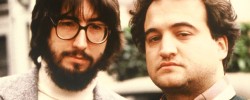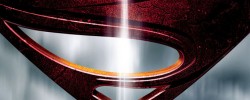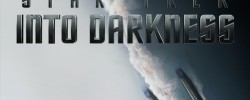
Review: Behind the Candelabra (2013)

Cast: Michael Douglas, Matt Damon, Rob Lowe
Director: Steven Soderbergh
Country: USA
Genre: Biography | Drama
Official Trailer: Here
“Too much of a good thing is wonderful,” says Michael Douglas’ Liberace at one point in Behind the Candelabra, Steven Soderbergh’s ostensible swansong from feature filmmaking. Few lines could better summate the unendingly versatile, unquestionably vital director’s career, which begun almost a quarter of a century ago with the Palme d’Or-winning Sex, Lies, and Videotape and (allegedly) concludes, more films than years later, with this musical biopic. Liberace, the flamboyant pianist who was at one point the world’s highest-paid entertainer, is its centre, if not entirely its focus: that, more so, is his tumultuous relationship with significantly younger lover Scott Thorson, on whose autobiography Richard LaGravenese’s screenplay is based.
But it’s less the shiny overall portrait that catches the eye than it is the immaculate detail, the minutiae of character conveyed by framing, the aesthetic expression of the virtuoso Soderbergh.
 Relegated to television broadcast in its home territory—it will play theatrically in other markets—due to being, per Soderbergh’s claim, “too gay” for the studios, Behind the Candelabra is nevertheless a production as cinematic as they come, adorned with sequins and stars. But it’s less the shiny overall portrait that catches the eye than it is the immaculate detail, the minutiae of character conveyed by framing, the aesthetic expression of the virtuoso Soderbergh. In our first glimpse of Liberace, bedecked with almost as much jewellery as the grand piano atop his Las Vegas stage, he comments that the tune he has been casually playing while addressing the audience is eight beats to the bar and progresses to double that. The audience—Matt Damon, especially, sat in the shadows as Thorson—gasps in awe. So is it with Soderbergh—who also shot and cut the film—who masterfully controls every beat of the film while similarly engaging the audience in conversation. Only when he doubles the pace, when he pushes us to gasp with his accentuated craft, do we truly come to appreciate the remarkable skill present in each and every frame.
Relegated to television broadcast in its home territory—it will play theatrically in other markets—due to being, per Soderbergh’s claim, “too gay” for the studios, Behind the Candelabra is nevertheless a production as cinematic as they come, adorned with sequins and stars. But it’s less the shiny overall portrait that catches the eye than it is the immaculate detail, the minutiae of character conveyed by framing, the aesthetic expression of the virtuoso Soderbergh. In our first glimpse of Liberace, bedecked with almost as much jewellery as the grand piano atop his Las Vegas stage, he comments that the tune he has been casually playing while addressing the audience is eight beats to the bar and progresses to double that. The audience—Matt Damon, especially, sat in the shadows as Thorson—gasps in awe. So is it with Soderbergh—who also shot and cut the film—who masterfully controls every beat of the film while similarly engaging the audience in conversation. Only when he doubles the pace, when he pushes us to gasp with his accentuated craft, do we truly come to appreciate the remarkable skill present in each and every frame.
Soderbergh’s moments of sixteen beats, as it were, are those of soaring crane shots and circling camera movements, wide-angled views of the palatial wealth of Liberace’s mansion. He, like his subject, engages us more when on eight beats, his craft invisible, his direction silently reinforcing the extraordinary talent he has gathered around him. Douglas and Damon, both experienced in working with Soderbergh previously, are at the peak of their abilities here, masterfully melding the film’s delicate balance of humour and hubris with a relationship that, for all the campy excess in which it’s lathered, rings true with the essence of human interaction. Every ounce of the film’s effect is hinged on the veracity of their respective evolutions; it’s a travesty that television broadcast excludes them from Oscar consideration, so resoundingly true do they make these transformations. A word Douglas gets the opportunity to spout more than once is “fabulous”, and truly he is, enshrouded in the role like Liberace in his furs. His intimacy with Damon is staggering; here are two of the biggest stars on the planet, their relationships slathered on tabloid headlines, whose every kiss never seems for a second unreal.
A word Douglas gets the opportunity to spout more than once is “fabulous”, and truly he is, enshrouded in the role like Liberace in his furs.
 “Men, women, who cares? What’s important is to be yourself. You just be who you are, baby boy.” It’s words like these, and the hypocrisy they betray, on which the film comes most of all to be predicated. Sculpting Scott—quite literally, at one point—to be like him, Liberace strives, as do we all in some sense, to define himself by the things around him. In fervently denying all rumours of his sexuality, despite a lifestyle that could scarcely more clearly indicate it, he seems oblivious to the reality that he is pushing Scott not to a resemblance of him, but of his perverted image. Liberace—the Vegas act, the jewel encrusted piano, the candelabra—does not exist. Lee—the man beneath, the real man—has never been allowed to.
“Men, women, who cares? What’s important is to be yourself. You just be who you are, baby boy.” It’s words like these, and the hypocrisy they betray, on which the film comes most of all to be predicated. Sculpting Scott—quite literally, at one point—to be like him, Liberace strives, as do we all in some sense, to define himself by the things around him. In fervently denying all rumours of his sexuality, despite a lifestyle that could scarcely more clearly indicate it, he seems oblivious to the reality that he is pushing Scott not to a resemblance of him, but of his perverted image. Liberace—the Vegas act, the jewel encrusted piano, the candelabra—does not exist. Lee—the man beneath, the real man—has never been allowed to.
Just as Soderbergh, progressing from expansive wide shots encompassing every decadent inch of this audacious wealth, brings his camera yet closer and closer to his actors’ faces as they are overrun with emotion, so too are they reduced, stripped of their lavish silks and furs to reveal the intimate humanity hidden underneath. Behind the candelabra, beneath the facelifts, beyond the Roman columns and Austrian rhinestones, these are but men—tragically, terribly ordinary men—and their relationship is no different to any other, defined by its possessiveness and the cruel, callous contradictions which define it. Their fervent self-denial, hiding from each other and themselves in the trappings of wealth and stardom, is as awful as it is awfully true. Seeking the people behind the personae has always been a key concern of Soderbergh’s work. In Behind the Candelabra, he has found them.
Related Posts
![]()
Ronan Doyle
![]()
Latest posts by Ronan Doyle (see all)































